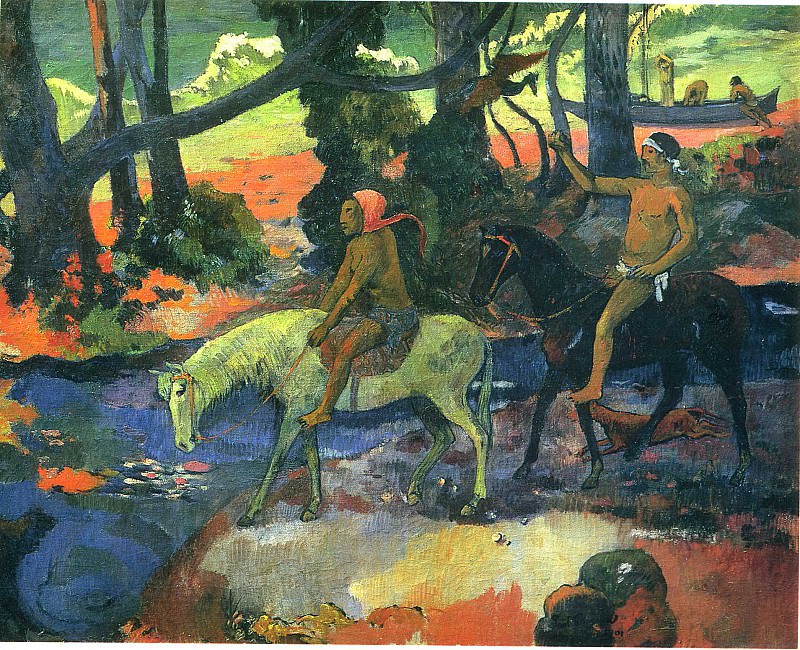Exploring the Artistry of Emily Carr
Emily Carr, a trailblazing figure in Canadian art, is celebrated for her profound contributions to the artistic landscape of the early 20th century. Born in Victoria, British Columbia, in 1871, Carr’s work is renowned for its distinctive fusion of indigenous themes and modernist techniques. Her paintings, characterized by vibrant colors and bold brushwork, reflect a deep reverence for the natural world and indigenous cultures of the Pacific Northwest. Carr's journey as an artist is not only a testament to her innovative spirit but also a narrative of personal evolution and cultural exploration.
Early Life and Influences
Emily Carr’s formative years in British Columbia were marked by an acute sensitivity to her surroundings. Growing up in the lush landscapes of the West Coast, she developed a profound connection to the natural world, which would later become a central theme in her art. Her early education in Victoria and subsequent studies at various institutions, including the San Francisco Art Institute and the Westminster School of Art in London, exposed her to a diverse range of artistic styles and techniques. These experiences laid the foundation for her unique artistic vision, blending traditional Western art practices with an emerging interest in indigenous art and culture.
Carr's exposure to indigenous art was particularly transformative. During her travels through the Pacific Northwest, she encountered the art of the Haida, Nuu-chah-nulth, and other indigenous peoples. This engagement profoundly influenced her work, inspiring her to incorporate elements of indigenous art forms into her paintings. Carr's respect and admiration for these cultures are evident in her representation of totem poles, ceremonial masks, and other symbols of indigenous heritage. Her work serves as a bridge between cultures, highlighting the beauty and complexity of indigenous art while reflecting her own artistic evolution.
Artistic Style and Themes
Emily Carr's artistic style is distinguished by its bold, expressive use of color and dynamic brushstrokes. Her paintings often depict the rugged landscapes of British Columbia, capturing the dramatic interplay of light and shadow. Carr's approach to landscape painting is marked by a sense of immediacy and emotional intensity, evoking the raw power and majesty of the natural world.
One of Carr's most notable contributions to art is her interpretation of indigenous motifs. Her incorporation of these elements was not merely a stylistic choice but a sincere attempt to understand and honor the cultural significance behind them. Carr's work often features totem poles and other indigenous symbols, rendered with a modernist sensibility that emphasizes their spiritual and cultural significance. This blending of indigenous and Western artistic traditions is a hallmark of Carr's oeuvre, reflecting her unique position as both an outsider and an appreciator of indigenous cultures.
Carr's paintings of the West Coast landscapes are equally significant. Her depictions of the towering trees, rugged mountains, and stormy seas are infused with a sense of the sublime. These works capture the untamed beauty of the natural world and convey a deep respect for its power. Carr’s ability to convey the essence of these landscapes through her expressive use of color and form is a testament to her skill and vision as an artist.
Major Works and Legacy
Emily Carr's body of work includes a diverse range of paintings, sketches, and writings. Among her most celebrated pieces are "The Totem Walk," "Indian Church," and "Big Trees." These works exemplify her ability to blend indigenous art forms with her own modernist approach. "The Totem Walk," for instance, captures the majestic presence of totem poles set against a lush forest backdrop, while "Indian Church" juxtaposes the sacredness of indigenous art with the architectural form of a church, highlighting Carr's exploration of cultural intersections.
Carr's legacy extends beyond her artistic achievements. She was also a prolific writer, and her memoirs and essays provide valuable insights into her life and creative process. Her writings reveal a deep introspection and a passionate commitment to her artistic vision. Through her literature, Carr has offered readers a glimpse into her world, enriching the understanding of her work and its significance.
In addition to her contributions to art and literature, Carr's impact on Canadian culture and art history is profound. Her innovative approach to blending indigenous art with modernist techniques has inspired countless artists and continues to influence contemporary art. Carr's work is celebrated for its ability to transcend cultural boundaries and resonate with audiences on a deep emotional level. Her paintings are held in major collections across Canada and internationally, and her legacy is honored through exhibitions, retrospectives, and scholarly studies.
The Emily Carr House and Museum
The Emily Carr House in Victoria, British Columbia, serves as a significant cultural landmark, preserving the artist's legacy and offering visitors a glimpse into her life and work. The house, where Carr spent much of her early life, has been meticulously restored to reflect the period in which she lived. It houses a collection of Carr’s paintings, sketches, and personal artifacts, providing a tangible connection to her artistic journey.
The museum dedicated to Emily Carr is an essential resource for those interested in exploring her life and work in greater depth. It offers a range of exhibits and programs that highlight Carr's contributions to art and her impact on Canadian cultural history. Through educational initiatives and public programs, the museum continues to celebrate Carr's legacy and engage new audiences with her work.
Conclusion
Emily Carr's artistic journey is a remarkable narrative of exploration, innovation, and cultural appreciation. Her paintings, characterized by their vibrant colors and bold forms, reflect a deep connection to the natural world and indigenous cultures. Carr's ability to blend traditional and modernist elements has left an indelible mark on the art world, and her legacy continues to inspire and resonate with audiences today. Through her work, Carr has provided a unique perspective on the beauty and complexity of the Pacific Northwest, and her contributions to art and culture remain a testament to her visionary spirit.















